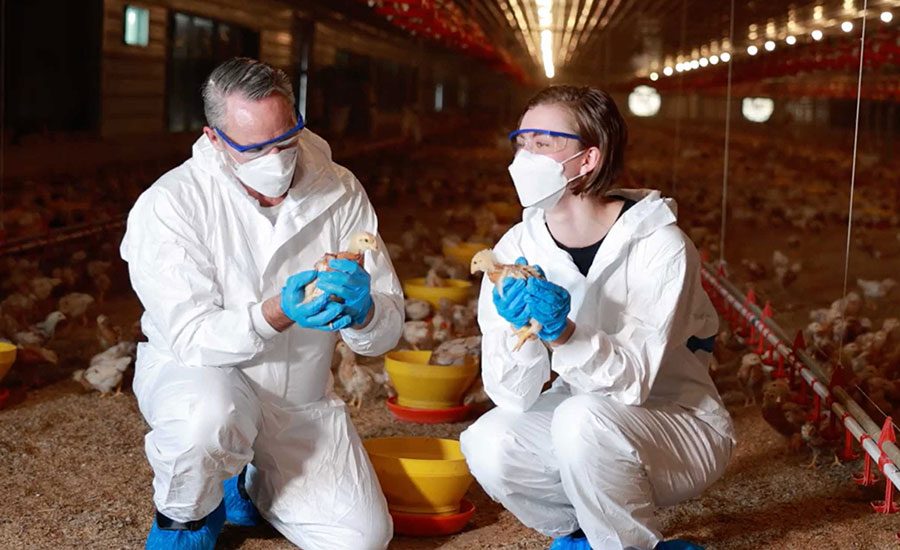Food producers and equipment manufacturers can effectively reduce the overall risk of food contamination by incorporating sanitary principles of hygienic design into food equipment and facilities.
Resources & Industry-Driven Initiatives
The equipment and facility design process is much more effective in reducing the overall risk of food contamination events when it is carried out collaboratively between food manufacturers and equipment fabricators. That includes drafting specifications and standard operating procedures that aim to improve the ability of companies to ensure sanitary conditions in the food manufacturing environment. The process is also aided if both the original equipment manufacturers (OEMs) and their customers have a deep understanding of microbiology and the conditions that result in ideal niches for microbes to thrive.
For many years, resources such as Engineering for Food Safety and Sanitation[1], a book written by Thomas Imholte, constituted the sole references available for the hygienic design and construction of food equipment and facilities. Today, there are also guidelines and checklists published by organizations such as 3-A Sanitary Standards, Inc., the Baking Industry Sanitation Standards Committee[2], the National Sanitation Foundation, the European Hygienic Engineering and Design Group (EHEDG) and the Grocery Manufacturers Association for further incorporation of hygienic design into both facilities and equipment. More recently, OEMs and food manufacturers engaged in a collaborative effort to reach an agreement on equipment sanitary design. This joint initiative, known as One Voice (OpX Leadership Network[3]), resulted in the development of a risk-based framework to define the appropriate hygienic specifications for the manufacture of low moisture foods. A similar approach could be applied to define common needs and expectations of both OEMs and food manufacturers across all food platforms.
All these resources can effectively assist equipment manufacturers and food industry personnel in understanding the proper elements of sanitary design to mitigate the risk of product adulteration with microbiological, physical or chemical contamination. Academia and the leading chemical companies (e.g., Ecolab) also play an important role in conducting research and communicating findings that lead to improvements in the selection of materials of construction, better understanding of microbial attachment to various surfaces and other critical factors that impact the ability of end users to maintain optimal sanitary conditions in the food handling environment.
Partnering with Academia, Kollmorgen, a manufacturer of motion components, commissioned a data-based study[4] to evaluate whether following industry hygienic design guidelines improved sanitation effectiveness. The study was conducted by the Virginia Tech Department of Food Science and Technology[5]. A comparison of a standard food grade motor, a nonhygienic stainless steel motor and a hygienically designed servomotor was evaluated in the study. The hygienically designed motor was developed by Kollmorgen to conform to the principles embodied in the North American Meat Institute[6] checklist and according to the EHEDG guidelines. Each motor was exposed to E. coli and then cleaned using an industry standard sanitation process. Samples were then tested at various locations on each motor. Escherichia coli was detected on the food grade motor at seven of the nine locations tested, and detected on 5 of the 9 locations on the non-hygienic stainless steel motor, and none of the nine locations on the hygienically designed motor proving component parts, in this case, motors that conform to industry hygienic guidelines can dramatically increase the efficacy of sanitation procedures.
Incorporating Sanitary Principles of Design Helps Food Processors Meet Regulatory & Third-Party Requirements
Joe Stout, former director of sanitation at Kraft Foods and current president of Commercial Food Sanitation, indicates that “the key goal of sanitary design principles is to increase the probability that every square inch of processing plant equipment can be properly cleaned to a microbiological and allergen-free level every day.” Besides this being the expectation from most customers in the industry today, the requirements for considering sanitary design criteria are contained within Good Manufacturing Practices (GMPs), specifically Title 21 CFR parts 117.20 Plant and Grounds, 117.35 Sanitary Operations, 117.37 Sanitary Facilities and Controls, and 117.40 Equipment and Utensils. Incorporating hygienic design is thus a requirement of GMPs in food production.
While the food regulatory agencies in the United States do not regulate food processing equipment, they do regulate its sanitary use. As a key element of the Food Safety Modernization Act[7], the Preventive Controls for Human Foods Rule requires each facility registered with the U.S. Food and Drug Administration (FDA) to prepare and implement a written food safety plan (FSP). The FSP should be focused on identifying and controlling risks specifically for each product, following this approach:
- Identify all potential risks (microbiological, chemical, physical)
- Determine which risks require a preventive control
- Develop preventive controls to manage those risks
- Have a monitoring program that documents that risks are being controlled
- List the expected corrective actions
- Verify that the systems are working
- Reanalyze the FSP when something significant changes or at a minimum once every 3 years
As an example of the application of these principles, sanitation has been identified by FDA as a preventive control requiring food processors to develop and maintain written cleaning and sanitation procedures for all food contact equipment and food contact surfaces if they are needed to prevent cross-contact with allergens or cross-contamination with pathogens. The written procedures must define the scope, cleaning or sanitation objective, management responsibility, monitoring, corrective actions, and recordkeeping associated with the cleaning or sanitation tasks.
Furthermore, FDA considers that environmental testing, for an appropriate microorganism of public health significance or for an appropriate indicator organism, is particularly useful as a verification measure for preventive controls (i.e., sanitation) in operations where contamination of food with an environmental pathogen is determined to be a significant hazard. In addition, various food safety management schemes recognized by the Global Food Safety Initiative[8], such as SQF and BRC, include environmental testing as part of their requirements.
Dave Kramer noted that “if you can’t see it and you can’t reach it, you can’t clean it or sample it;” therefore, incorporating sanitary principles of design in food manufacturing environments enables compliance with regulatory requirements and industry-adopted standards, as well as meeting consumer and customer demands. Elimination of niches in machinery where pathogens can harbor reduces the risk of cross-contamination of food.
Conclusion
The goal of sound sanitary design is to increase the efficacy of sanitation procedures and reduce the risk of cross-contaminating the food being manufactured. The resources on this proactive approach available to food producers are expanding. Utilizing these resources and participating in industry initiatives to analyze and mitigate risks in food production helps manufacturers to comply with regulations but more importantly ensures the production of safe food for the marketplace.
Rolando Gonzalez is a former global food safety specialist with The Acheson Group. Bill Sutton is a business development manager with Kollmorgen.
References
1. https://www.foodengineeringmag.com/ext/resources/WhitePapers/Kollmorgen---Hygienic-Design-and-Food-Safety.pdf.
2. http://www.bissc.org/.
3. http://www.opxleadershipnetwork.org/.
4.https://www.kollmorgen.com/uploadedFiles/kollmorgencom/Service_and_Support/Knowledge_Center/White_Papers/Scientifically%20Hygienic_WP_Final_w%20bio.pdf.
5. https://www.fst.vt.edu/.
6. https://www.meatinstitute.org/.
7. http://www.fda.gov/Food/GuidanceRegulation/FSMA/default.htm.
8. http://www.mygfsi.com/.






